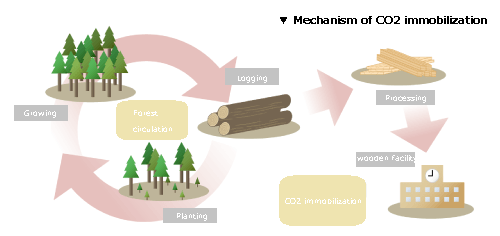Contents
Shelter’s environmental policy
By maximizing the use of natural energy sources such as solar energy, Shelter is taking on the challenge to create “zero-emissions” in homes and large-scale wooden buildings. By promoting architecture that utilizes natural energy and materials, Shelter seeks to raise the quality of life for homeowners and aspires to improve the natural environment.
Tree thinning, harvesting mature trees in which carbon is fixated and the planting of new trees are all indispensable for proper forest maintenance, which serves as a basis for preventing global warming and improving the overall quality of river water. Shelter utilizes this lumber in the construction of homes, local government buildings, schools, and welfare facilities throughout Japan and contributes to the restoration of natural resources such as “clean air and water.”
Shelter shall make every effort to preserve the environment by complying with environmental laws, ordinances, and conventions. Shelter will continue to conduct business activities that will always be aware of the environmental aspects by preventing pollution, setting specific environmental goals, self-regulating the environmental impact of Shelter business activities, and by promoting energy-saving, recycling, and environmental load reduction.
For this purpose, Shelter will continue to train its employees and partners, be thorough in fulfilling its environmental policy, and to raise awareness of its employees and partners.
Environmental measures

For the sake of the future environment and our families, Shelter is particular about creating “space for trees” that reflects the company’s love and respect for nature. As public concern toward the environment increases, the importance of forests is better appreciated and logging receives a bad impression. But this is a misunderstanding.
The reason why trees and forests are important for the environment is that trees absorb and store carbon dioxide from the air and produce oxygen through photosynthesis. In other words, forests are the air purifiers of the planet. While this photosynthesizing function of a tree increases until about 50 years after it is planted, this function thereafter diminishes over time.
A large difference separates adult trees and young trees in terms of their ability to absorb and store carbon dioxide from the air. Logging, creating “space for trees,” and planting new trees will suppress the greenhouse effect and preserve the environment.
The lumber used in buildings continues to store carbon dioxide. Creating a wood-built city is tantamount to creating a forest in the city. Shelter effectively utilizes forest resources to promote wooden buildings with small environmental load.

Acquired FSC®/CoC accreditation

In contributing to forest conservation and use, Shelter has obtained the accreditation from the Forest Stewardship Council (FSC) which is considered to be the most reliable forest accreditation system in the world.
Shelter has acquired the Chain of Custody (CoC) accreditation for production, processing, and distribution processes and accreditation for appropriate processing and supply of FSC materials.
Acquired SGEC/CoC accreditation

The Sustainable Green Ecosystem Council (SGEC) is a Japanese forest accreditation system established for the purpose of raising domestic forest maintenance standards, revitalizing the forest industry, and promoting sustainable forest production.
Shelter has acquired the Chain of Custody (CoC) accreditation for production, processing, and distribution processes and accreditation for appropriate processing and supply of SGEC accredited materials.
Accredited as “Collaborator in protecting Japan’s forests”

Shelter was chosen by the Council to Promote the Protection of Japan’s Forests Utilizing Domestic Materials as a 1st term accredited company of “Companies to Collaborate with the Council to Protect Japan’s forests” for the drive to expand the use of domestic materials with the goal of passing on healthy forests to future generations.

With the slogan “Creating a Forest in the City,” Shelter supports the virtuous cycle of logging and planting trees, and promotes the use of locally-produced lumber nationwide.
Activities are conducted in preserving the environment and preventing global warming by maintaining forests, which are the largest carbon-dioxide absorbers, and increasing their absorption ability.
Involved in the “Tree Using Movement”
Forests play a large role in reducing the carbon-dioxide component of greenhouse gas.
The “Tree Using Movement” is promoted to advocate the active use of domestic trees in order to create healthy forests that plentifully absorb carbon dioxide.
Shelter is wholeheartedly involved in this movement.